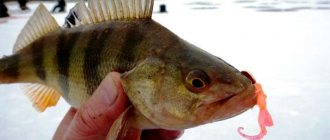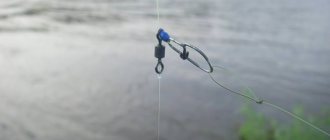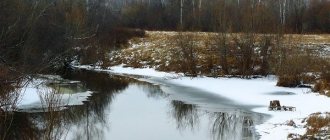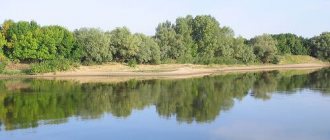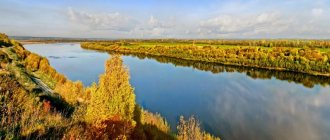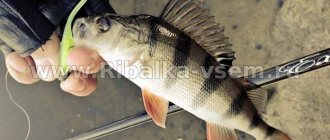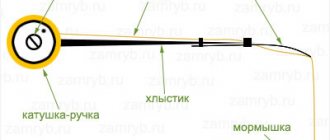Hello, dear readers of my blog. If you are reading this entry, then most likely you are now concerned with the question - what kind of fish bites in November and what to catch them with? This is what I will talk about today.
It’s worth remembering that November is still autumn (the time for predators) and there’s pretty decent fishing in open water now - Perch, Pike, Bersh, Pike-perch, Burbot are slowly becoming more active... you can still catch catfish.
On rivers with warm channels on the bed you can also catch whitefish (whitefish) - roach, silver bream, bream, bream and crucian carp.
All fish, except heat-loving ones, become active with the onset of autumn and are caught with the same baits as in summer or spring. Although in November, with the cold weather, you already need slow-moving baits, such as winter ones. For example, winter spinners, balancers, vertical spinners and fishing from a boat show a good catch. Of the cyprinids, only roach and silver bream are now caught using maggots, always with smaller and larger bloodworms using maggots. Although you can catch carp in November. Well, now in more detail about each type of fish
Perch
Unlike many other fish, it is caught very well in late autumn. The problem is that finding it at this time is often difficult: apparently, the opinion that perch hardly feeds in November is due to this. At the end of October, schools of perch finally move to the deepest places - where small invertebrates still remain and where there is a chance to profit from the remains of the meal of larger predators. Deep floodplains, holes. backwaters connected to the river by a narrow stream are precisely those areas where it is easiest to find perch in November. When you go out to a school, thinning it out is not difficult: for this you will need small twisters or simple rotating spoons of sizes from O to 2.
Fishing in November
The last ten days of autumn give all fishing fans the opportunity to catch perch, pike, asp or pike perch.
In addition, the catch of roach, carp or crucian carp will be a pleasant addition. Depending on the weather and the week of the month, the fish will bite differently. Considering that the first half of November, albeit occasionally, pleases with windless sunny days, amateurs and professionals can get a catch of all types of fish (naturally, taking into account the population in a particular body of water). At this time, predators quickly cut through the surface throughout the entire depth, but the crucian carp sinks as low as possible.

Starting from the second half of November, the weather conditions are no longer so favorable: the temperature is close to zero degrees, it rains, and the atmospheric pressure decreases. At this time, herbivorous fish are no longer caught, leaving the reservoir at the complete disposal of predators.
Zander
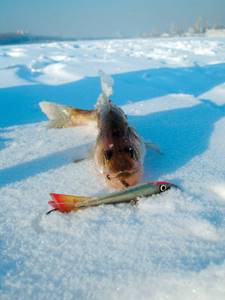
November pike perch is not the most active predator, but an experienced spinning angler can catch it often and in large quantities. There is only one secret in autumn fishing - finding the exit point of the flock. As a rule, pike perch feeds near holes, on edges, on sharp turns and near snags - of course, if it lies at a considerable depth. It makes sense to catch it exclusively with a jig - pike perch are caught much worse with wobblers, and leaving them on snags is not a cheap pleasure. The optimal rig option would be a “Cheburashka” weight and a light, or, on the contrary, black, twister on an offset hook: this combination ensures maximum mobility of the bait and simplifies hooking. Some anglers use winter lures to catch pike perch and catch them in a vertical line. Of course, such fishing is not suitable for everyone, at least because it requires a boat, but if you have such an opportunity, it’s worth a try.
Fishing in November with a fishing rod
Those who are not used to fishing with a spinning rod should not deny themselves the pleasure of fishing with a regular float rod. Hunters should remember that for a long time the fish lived in comfortable conditions, but with the advent of the first cold weather, it received serious stress. Accordingly, she can do things completely unexpected. Therefore, when going fishing in November, it is recommended to stock up on several types of bait. Read more about roach fishing in November here.
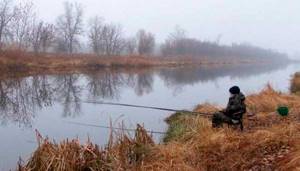
In addition, the fisherman must be especially careful. The water in November is almost always clean and transparent, making it possible to visually determine in which places the fish are located. Considering that you won’t be able to cast a float rod far, it should be thrown to the places where the flock has stopped.
Before you start fishing, you need to accustom the fish to the fact that there is food in this place. For this, it is also recommended to take several types of bait. The first cast of the fishing rod should be done no earlier than 40 minutes later. Read also about fishing for bream in November.
Bleak
Bleak usually stops pecking completely in the second half of November, but this fall it may go to winter much earlier. If your region experiences warm days. you can try fishing it with a light float rod. At this time of year, schools of bleak stand in the middle layers of water or at the very bottom. What is typical is that in late autumn the bleak very rarely changes depth, and if you find it at a certain distance from the bottom. Most likely she will be there for a long time.
Fishing in November with spinning rod
The degree of heat capacity of water is quite high; accordingly, a river or lake cools slowly, in layers. Due to the rapid decrease in air temperature, small-sized fish go into the very depths and practically do not move (stand in holes). Therefore, professionals recommend using spinning rods suitable for catching large specimens. Large fish in cold water do not fall asleep, but only lose sharpness in movement.
Video about catching a predator with a spinning rod in the last month of autumn
Pike 6,500 kg on Kuasamu
For bait, it is better to opt for jigs (small silicone fish with a characteristic color to attract a predator). In this case, any wiring can be used, it is only important to take into account the features of the bottom and the current (whether it exists or not). After conducting a series of tests, it was found that in most cases it is better to catch a predator using vertical wiring with a head weighing within 7 grams. As for the fishing line, the ideal solution here would be to take a braided cord.
This is interesting about fishing in November:
- burbot;
- asp.
Pike
In the first half of November, pike remains highly active and can be caught well from late morning until sunset. Occasionally the bite gets worse: usually the deterioration is observed on the clearest days, when artificial baits are clearly visible in clear water. However, even at this time it is easy to deceive the pike. For catching autumn pike, large wobblers with a wide, sweeping action, oscillating spoons, large spinners and silicone baits - twisters and vibrotails - are suitable. You should look for a predator either in holes (on rivers) or in relatively shallow water table areas adjacent to the holes.
- green - good bite
- blue - normal bite
- orange - weak bite
- white - doesn't bite
What kind of fish is caught in late autumn?
So, let's take a closer look at which fish fishing can bring the greatest results during the transition period. The last weeks of autumn are productive for fishing for pike, pike perch, perch, burbot, bream and roach. Pike bite well in November: the intensity of its feeding can be compared with the period before spawning.
Experienced fishermen believe that the most suitable time to catch pike is the morning (the first morning hours) and the period before sunset. During the day the catch is rare.
With the onset of cold weather, pike perch begins an active search for prey. The greatest results can be achieved at depth. How to fish: Most fishermen prefer night fishing for pike perch using a bottom fishing rod or jig. Both open water and first ice are suitable for perch. A large catch of perch is achieved on warm days and with little wind (direction - south or west). The greatest effect is possible when using sinking small wobblers.
https://youtu.be/5EARu1FRP_E
The last weeks of autumn are the time for targeted burbot fishing. It is believed that one should choose its feeding places (during the night stay), so it is recommended to catch burbot at night. Live bait is chosen for bait in November. Many anglers prefer to catch bream in late autumn. The bream bite continues around the clock, but the peak of activity reaches around 10 am. With the onset of cold weather, the fish choose large and medium depths. The end of autumn is also productive for catching roach (it shows a good reaction to a moving bait).
Catching burbot
In November, like many fish, the burbot goes hungry; not taking advantage of this is a real crime.
The behavior of burbot in November is opposite to the behavior of pike and perch: when cold weather sets in, it leaves its favorite holes and snags and increasingly approaches the shore. Donks are well suited for open water fishing, since they still move mainly along the bottom.
The burbot bite, as is the case with pike perch, occurs in the evening and at night.
From the shore
The more small fish there are off the coast, the greater the chance of meeting burbot. Feel free to cast gear at different distances: start with 3 meters from the shore, gradually adding a couple at a time if there is no bite.
The choice of gear for catching burbot in November is small: mainly only a donka .
You can also try to catch using spinning rods , using spinners, wobblers and even foam rubber . In the daytime, use a retractable leash to deepen the tackle, since during the day burbot cannot be found near the surface. At night, it makes sense to light a fire on the shore, because the light attracts burbot.
According to the first ice
The first and most effective way is to catch burbot using a hook. (this is a special spinner that, with its knock on the ice, attracts burbot). They are also caught with baitfish using live bait and with a worm (for this you need to breed worms at home.). Sometimes they are caught using lures with varying success.
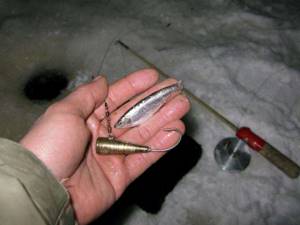
Video on catching burbot in November:
Burbot in November on first ice, video:
Bream
With the onset of November cold, bream begins to migrate further inland. As bait, he increasingly prefers live baits - worms, maggots, bloodworms. With the onset of November, his feeding practically ends, therefore he begins to peck much less actively than in October or September. To enhance the bite, you can use bait made from corn flour, oatmeal and breadcrumbs. You can also add boiled semolina with lumps to the bait.
From the shore
From the shore in open water, bream can be caught using a float, but catching it with a feeder . When catching bream on a feeder in the current, closed feeders are used, and in still water (on lakes, ponds) - semi-open ones. If you have a boat, you can fish with a ring. How to choose the right feeder equipment for bream .
When fishing with a float, animal baits are used as bait - maggots, bloodworms, worms. You can also make “sandwiches” - alternating maggots with peas, pearl barley or oatmeal.
Find out when and what bream bites best.
According to the first ice
In winter and in general, catching bream on ice is very problematic, but not impossible.
Possible gear:
- Jig tackle, equipped with a nod, with hooks numbers 12-14, leash line 25-35 cm long.
- Float tackle, with fishing line 0.14-0.18 mm thick.
To enhance the bite of bream in winter, use winter bait consisting of sunflower cake.

The holes are drilled about a meter apart from each other. Types of catchable jigs for bream:
- Drop;
- Devil;
- Ural;
- Klopik;
- Ant.
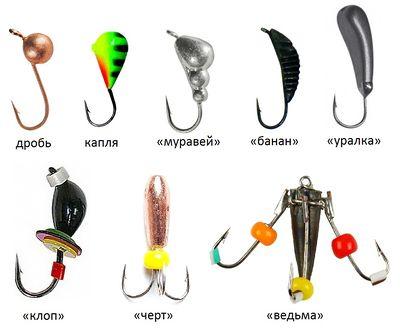
Hooks on jigs according to Russian standards - No. 5.
Bream fishing video:
Fishing for bream on the first ice on Zyuratkul:
Fishing tips
Well, if you plan to catch pike in November, then in the summer or in September, when there are more opportunities for exploring the reservoir, you can look for holes and pools, recording this data in your notebook or navigator. The deepest areas of lakes and rivers in November will be the most promising when it comes to pike fishing. This is especially true for a fisherman who fishes from the shore, since he will have to make a targeted long cast. And this is more effective when you already know in advance where you need to send the bait, rather than acting at random.
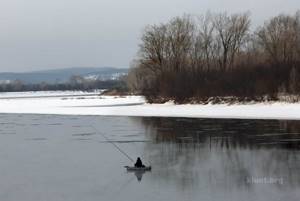
Well, one more piece of advice: even if everyone says that pike go deeper in late autumn, but if you notice a promising place (blockages, the edge of aquatic vegetation, holes near the shore or a reverse current, etc.), do not disdain these places, citing on November. There is still enough oxygen in the water, and pike can go to smaller areas in November. Another thing is January and February, but more on that later.
Good luck to you and all the best.

